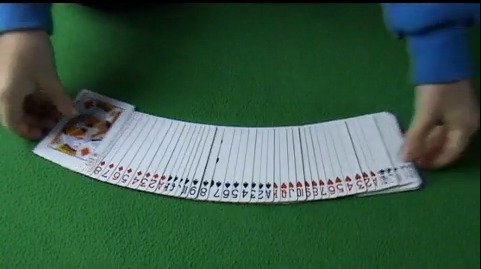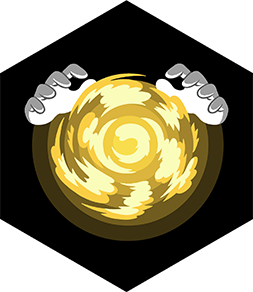Master a card trick
Learn and practice a simple card trick using shuffling, sleight-of-hand, and misdirection to amaze friends while building confidence and focus.



Step-by-step guide to master a card trick
Master this UNBEATABLE Easy Card Trick for Beginners in Minutes!
Step 1
Sit at the table and pull off the top 21 cards from the deck into one small face-down stack.
Step 2
Square the 21 cards neatly so the edges line up.
Step 3
Deal the 21 cards into three face-down piles of seven by dealing one card at a time to each pile left to right.
Step 4
Ask your friend to quietly point to the pile that contains their chosen card without showing it to you.
Step 5
Gather the three piles into one stack with the pile they pointed to placed in the middle and square the stack.
Step 6
Deal the 21 cards again into three face-down piles of seven the same way as before.
Step 7
Ask your friend to point to the pile that now contains their card without showing it.
Step 8
Gather the piles again with the pile they pointed to placed in the middle and square the stack.
Step 9
Deal the cards a third time into three face-down piles of seven just like the other rounds.
Step 10
Ask your friend to point to the pile that contains their card one more time.
Step 11
Gather the three piles again with the pointed-to pile in the middle and square the final stack.
Step 12
Count face-down from the top and stop at the 11th card then slide that card out.
Step 13
Reveal the slid card to your friend and then share a photo or video of your trick and how you practiced on DIY.org.
Final steps
You're almost there! Complete all the steps, bring your creation to life, post it, and conquer the challenge!


Help!?
What can we use if we don't have a standard deck of cards?
If you don't have a deck, make 21 paper cards labeled with numbers or pictures, square them into one small face-down stack, and follow the same 'deal the 21 cards into three face-down piles of seven' steps.
What should I do if I accidentally put the wrong pile in the middle or lose track while dealing?
If you place the wrong pile in the middle or lose count, square the piles and restart that round by dealing the 21 cards into three face-down piles of seven again so you can ask your friend to point to their card and keep it tracked.
How can I adapt the trick for younger children or make it harder for older kids?
For younger kids (ages 4–6) use 9 large paper cards dealt into three piles of three and do two rounds with the pointed-to pile placed in the middle, while older kids can do the full 21-card, three-round routine and practice sleight-of-hand or misdirection before counting to the 11th card.
How can we personalize or extend the activity after learning the trick?
Personalize the routine by decorating the 21 cards, adding a short story while you deal for misdirection, recording the reveal of the 11th card, and sharing the photo or video of your practice on DIY.org.
Watch videos on how to master a card trick
3 EASY CARD TRICKS Anyone Can LEARN In Just 5 MINUTES!!
Facts about magic for kids
⏱️ Great card magic combines secret moves with tight timing and friendly patter so the audience never notices the switch.
🃏 A standard 52-card deck can be arranged in 52! (about 8.07×10^67) different orders — that's astronomically huge!
🔀 About seven perfect riffle shuffles are enough to thoroughly randomize a deck.
🎩 Dai Vernon, nicknamed "The Professor," is one of the most influential sleight-of-hand card magicians in modern history.
🧠 Misdirection works because our brains can only focus on a few things at once—magicians guide your attention like a spotlight.
How do I teach my child a simple card trick using shuffling and misdirection?
What materials do I need to practice a children’s card trick?
What ages is learning simple card tricks suitable for?
What are the benefits of learning card tricks for kids?


One subscription, many ways to play and learn.
Only $6.99 after trial. No credit card required


